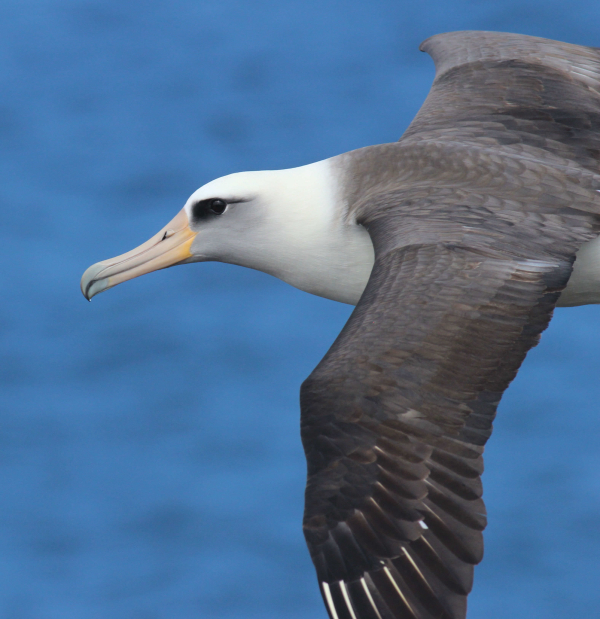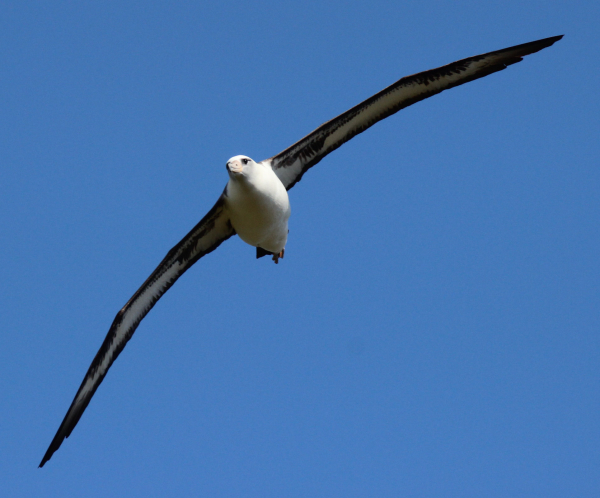
Twice the size of the largest modern albatrosses, the giant bony-toothed pelagornithids were formidable predators with the largest wingspan of all birds (Laysan Albratross photos by Paul Konrad).

|
A new study published last week describes giant seabirds with wingspans that spanned up to 21 feet wide that flew above Antarctica and the surrounding ocean about 50 million years ago. The newly discovered birds were somewhat similar to modern-day albatrosses, but they had much larger wingspans that would have allowed them to glide for days or even weeks at a time over the open ocean. By comparison, the largest modern-day albatrosses have wingspans of about 11 feet – about half the size of the pelagornithid monster birds.
Fifty million years ago, Antarctica was warmer than today and it was a haven for birds, including early penguins, and the large pelagornithids likely dominated the sky. The beaks of these ancient sky monsters had bony projections covered in keratin. These tooth-like structures, about 1-inch long, would have helped the prehistoric seabirds grasp fish and squid they caught. The new examination of fossils from Antarctica revealed that these very large species of seabirds evolved less than 15 million years after an asteroid wiped out non-avian dinosaurs.
“These bony-toothed birds would have been formidable predators that evolved to be at the top of their ecosystem,” explained study co-author Thomas Stidman with the Institute of Vertebrate Paleontology and Paleoanthropology at the Chinese Academy of Sciences. Pelagornithids likely boasted the largest wingspan of any bird, but the last pelagornithids went extinct about 2½ million years ago.
The new study was published last week in the journal Scientific Reports. It focused on a bone from a bird’s foot that was collected in the 1980s on Seymour Island, near the Antarctic Peninsula. In 2015, Peter Kloess, a University of California at Berkeley paleontology graduate student found the bone in the collection of the UC Museum of Paleontology. As he looked over the notes accompanying the bone, he realized it was from older rock than originally described. In fact, instead of being 40 million years old as labeled, the bone was 50 million years old, and far larger than any other pelagornithid bones found during that age. That insight led to more study of the fossil that led to the new information.
The original news article was published on the Live Science website at https://www.livescience.com/monster-bird-fossils-antarctica.html
The scientific article describing the above information was published October 27 in Scientific Reports at https://www.nature.com/articles/s41598-020-75248-6